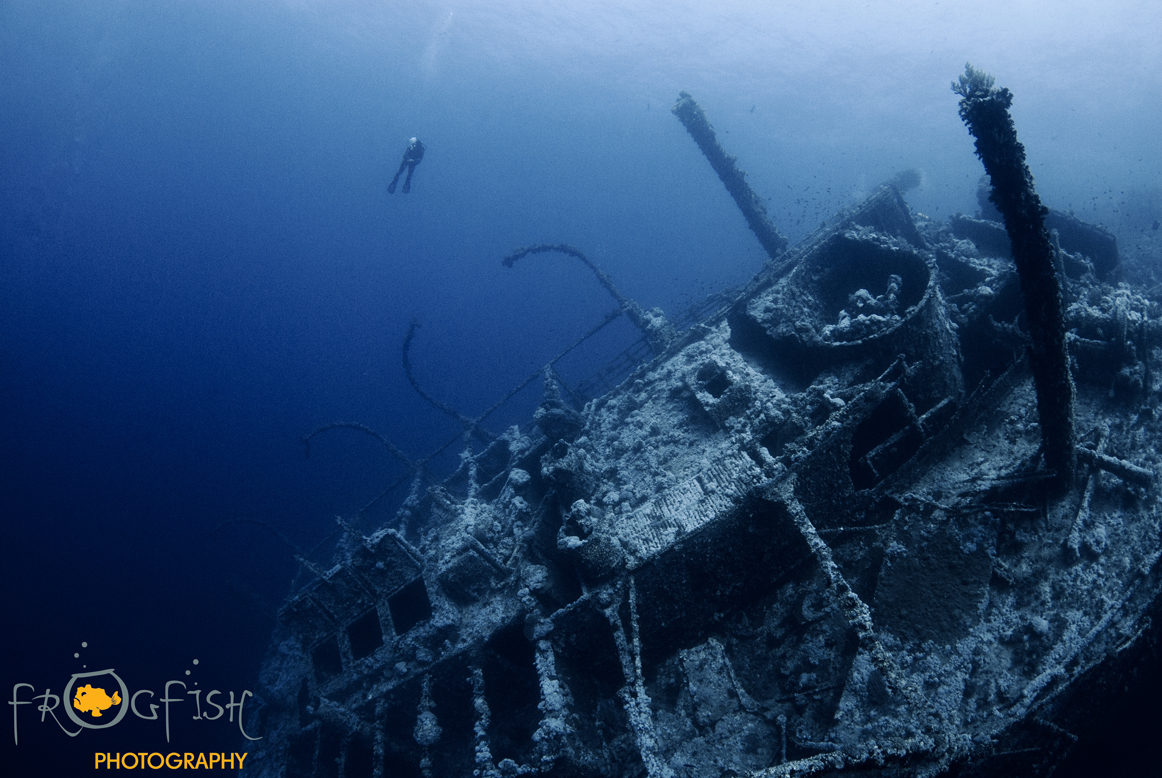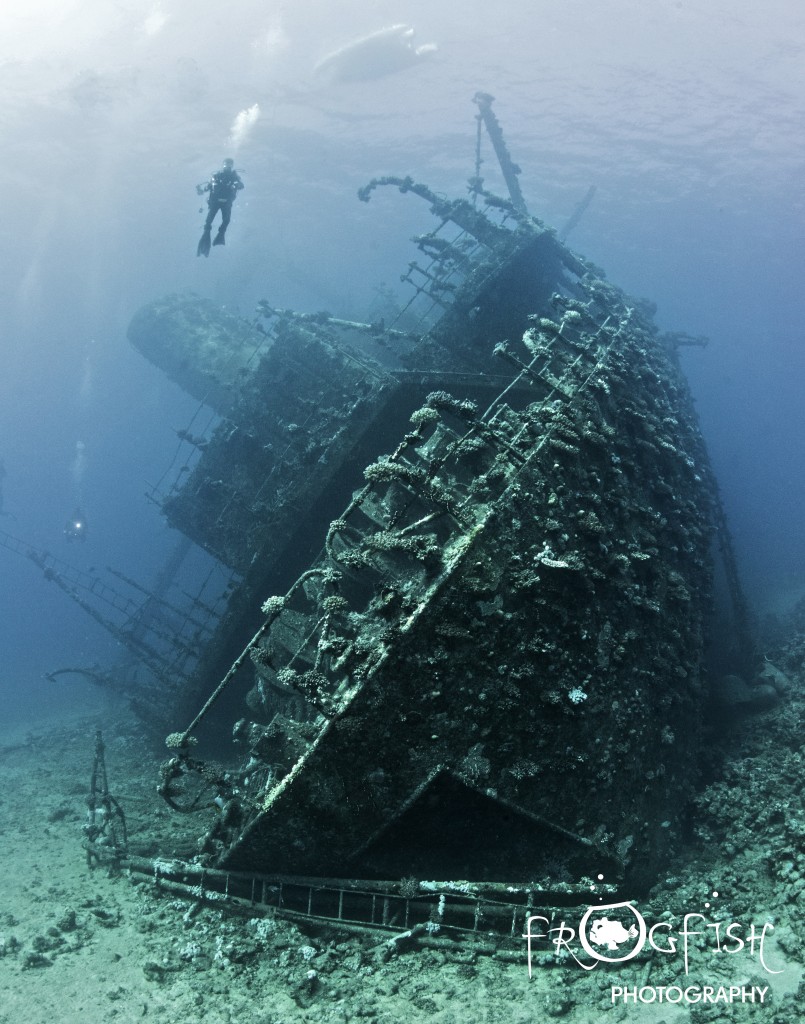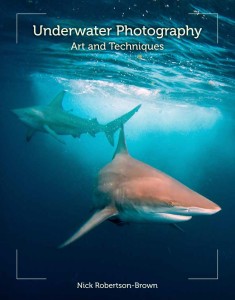News
Underwater Photography Essentials: Part 3

Tips, ideas and advice for budding underwater photographers
by Nick Robertson-Brown FRPS
Part 3: Getting to grips with your camera settings – ISO
Read Part 1 of Underwater Photography Essentials here.
Read Part 2 here.
The third element in controlling the exposure value is the ISO. The term ISO is an acronym for the International Standards Organisation which prescribed a common standard for the sensitivity of a film many years ago. The higher the ISO number, the greater the sensitivity to light; but it came at a price. As the sensitivity to light improves and the ISO number on the film gets higher, the lower the quality of the image becomes. With a high ISO film, the image looks grainy and hence the resolution is reduced. The same standard has been maintained in digital imagery, whereby the exposure value of a digital image will be the same as it is on a film camera, as long as all the settings are the same. There are, however, still penalties as you increase the ISO value. In much the same way as it did on film cameras, the image becomes grainy, but we refer to this as noise – and a noisy image has very restricted uses.
On the face of it, it would appear that increasing the ISO is a great way to increase the exposure value of your image with no major side-effects. Only a few years ago, using the ISO as part of the exposure triangle was restricted to changes between ISO 100 and ISO 800 (at best). Modern technology has come a long way in the last 4 to 5 years and on some cameras, mostly expensive ones, ISO values of 2500 can produce images with very little noise.
With the introduction of modern technology, the ISO setting is now a serious tool to be exploited underwater, as high ISOs are ideal for working in low light conditions. The ability of an individual camera at different ISOs will vary between manufacturers and camera models and it is important that you understand the limitations of your own camera so you know how far you can push the limits of the ISO setting. You can test this limit by taking a sequence of images into shadow and increasing the ISO on each shot. The low ISO image should look clean and black, whereas the high ISO image will look really noisy with hundreds of tiny red or blue dots which become clearly apparent when you zoom in. By taking a sequence of images, you can look at the effect as you increase the ISO, and you can decide how high an ISO value you are happy with. There is a certain amount of subjectivity in this, but it is what you think that is important.
Having the ISO set to the right value is still important, despite the advances in technology. Ideally, the default setting should be at your lowest ISO setting, which is usually 100 and this means your images will give the best resolution of your camera can produce. Whilst an image which you have taken at ISO 400 for example, may look as good as the one you took at 100, when you zoom in, and look really closely at it, you will appreciate the higher resolution of ISO 100.
One point I should make about using the ISO at high values, is that on certain images, the noise can actually work, possibly even enhancing the result. However, this is unusual, and increasing the ISO level should really only be used if reducing the shutter speed would induce motion blur or shake, and opening the f-stop would reduce your depth of field beyond the level you are comfortable with.

This image of the wreck of the Giannis D is shot with a high ISO (1250) on a Nikon D800, so whilst there is some noise, it suits a wreck shot.
Now that we have discussed all three factors that affect exposure control, pick up your camera, put it into manual, and start to experiment.
Whilst we are dedicated Nikon camera users, we found this useful tool on the Canon website and thought it was worth posting. You do not even need to get your camera out to see how ISO, Aperture and Shutter Speed interact – as you can give it a go on this handy web tool whilst sat at your computer:
www.canonoutsideofauto.ca/play
————————————————————————————————————————————————————
 Do you want to learn more? You can pick up a copy of Nick’s book “Underwater Photography Art & Techniques” by clicking here. For a signed copy, click here.
Do you want to learn more? You can pick up a copy of Nick’s book “Underwater Photography Art & Techniques” by clicking here. For a signed copy, click here.
Underwater Photography Courses
Contact Nick for information on the Frogfish Photography Complete Underwater Photography Award, designed for 1:1 and small group sessions to improve your underwater photography at your pace.
www.frogfishphotography.com | frogfishphotos@gmail.com | ![]() +44 (0)161 9177101
+44 (0)161 9177101
Gear News
Introducing the TR-80, IR-50 and CS-30 Regulators from DYNAMICNORD

Whether you are a beginner or a professional diver – with the three new main regulators from DYNAMICNORD, everyone will find their favourite regulator. They all look super stylish.
Excellent performance with the TR-80
Quality and performance are the be-all and end-all for regulators. It is not for nothing that the TR stands for Tec Reg. The innovative design of the TR-80 guarantees absolute reliability – even in ice-cold waters.

Perfect breathing effort at 0.8 J/l / certified for diving in waters below 10 degrees / structural design made of solid brass for best cold protection / membrane-compensated design with dry seal of the first stage / reduced exhalation effort thanks to optimized exhalation membrane and bubble deflector / adjustable Venturi (dive/predive) and adjustment knob for individual inhalation comfort / innovative design of the front cover prevents free-flow in strong currents or when diving with scooters / design made of sandblasted brass, matt chrome finish / 2 HP and 4 LP outlets / mouthpiece made of high-quality, anti-allergic silicone for maximum comfort.


Amazing underwater adventures with the IR-50
The IR-50 is the top regulator for advanced and experienced divers. Natural breathing is the essence of this regulator.

Ideal breathing effort at 0.8 J/l /certified for diving in waters below 10 degrees / compensated membrane / adjustable venturi (dive/predive) and adjustment knob for individual inhalation comfort/ outlet valve and deflector for minimum exhalation effort and reduction of bubbles on the face / design made of sandblasted brass, matt chrome finish / 2 HP and 4 NP outlets / mouthpiece made of high-quality, anti-allergic silicone for maximum comfort.


The Workhorse – our CS-30
For diving centres and diving beginners – the workhorse stands for strong construction, reliability and robustness. Perfect for your training.

Optimal breathing effort at 0.8 J/l /recommended for diving in waters above 10 degrees / non-compensated piston / adjustable venturi (dive/predive) / outlet valve and deflector for minimum exhalation effort and reduction of bubbles on the face / design made of sandblasted brass, matt chrome finish / 1 HP and 3 NP outlets / mouthpiece made of high-quality, anti-allergic silicone for maximum comfort.


Octopus OP-30
The OP-30 is the ideal addition to all DYNAMICNORD regulators. It is identical in construction to the CS-30.

The TR-80, IR-50, CS-30 (DIN & INT) regulators and the Octopus OP-30 are available from DYNAMICNORD dealers and in the online store.
DYNAMICNORD – Your Outdoor Companion.
Marine Life & Conservation
Paul Watson Released as Denmark Blocks Japan’s Extradition Bid

Renowned anti-whaling activist Paul Watson has been released from custody in Greenland after spending five months in detention. Denmark’s Justice Ministry rejected Japan’s request for his extradition, citing insufficient guarantees that his time already served in custody would be credited against any potential sentence.
The 74-year-old Canadian-American was arrested on July 21 in Nuuk, Greenland’s capital, when his ship docked to refuel. His arrest was based on a 2012 Japanese warrant related to a 2010 encounter in Antarctic waters. Japan alleged Watson obstructed operations and caused damage to a whaling research ship during efforts to disrupt illegal whaling. Watson has consistently denied these claims, maintaining his commitment to marine conservation.
Denmark, which oversees extradition matters for Greenland, concluded that while the legal conditions for extradition were met, the lack of assurances from Japan regarding time-served credit made extradition untenable.
In a video shared by his foundation, Watson expressed gratitude and relief, saying, “After five months, it’s good to be out… and good to know they’re not sending me to Japan.” He added that the most difficult part of his time in custody was being separated from his two young sons.
Watson is a pioneering figure in marine conservation, known for founding the Captain Paul Watson Foundation in 2022 after decades of activism with the Sea Shepherd Conservation Society. His bold efforts to defend marine life have earned him widespread support, including from celebrities and conservationists. His work has also been featured in the acclaimed reality TV series Whale Wars.
Watson’s lawyer, Jonas Christoffersen, praised the decision, stating, “We are happy and relieved that Paul Watson is now free.” He added that Watson is eager to reunite with his family and continue his vital work.
The arrest occurred while Watson’s vessel, the M/Y John Paul DeJoria, was en route to the North Pacific with a team of 26 volunteers to intercept a Japanese whaling ship. His foundation described the arrest as politically motivated and emphasized that Watson’s actions were focused on ending illegal whaling practices.
Japan resumed commercial whaling in 2019 after leaving the International Whaling Commission, asserting that whale meat is a cultural tradition. Conservationists, however, continue to challenge these practices, highlighting their impact on marine ecosystems.
Despite the challenges, Watson remains steadfast in his mission to protect marine life and bring attention to whaling practices. His dedication to ocean conservation has made him a globally respected advocate for the environment.
-

 News2 months ago
News2 months agoIconic SS United States to become the World’s Largest Artificial Reef
-

 News3 months ago
News3 months agoBook Review – 52 Assignments: Underwater Photography
-

 Gear News3 months ago
Gear News3 months agoDYNAMICNORD – New German diving brand enters the British market
-

 News3 months ago
News3 months agoExploring Cenote El Pit: A Diver’s Dream
-

 Gear News3 months ago
Gear News3 months agoTry BARE drysuits (and maybe even win one!) this Friday with Sea & Sea at North West Dive Fest
-

 Marine Life & Conservation3 months ago
Marine Life & Conservation3 months agoBook Review: Coral Triangle Cameos
-

 Blogs2 months ago
Blogs2 months agoDive the Egyptian Red Sea this Autumn with Regaldive
-

 News3 months ago
News3 months ago2024 Ocean Art Underwater Photo Competition Announced

















